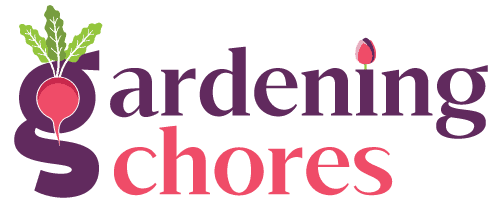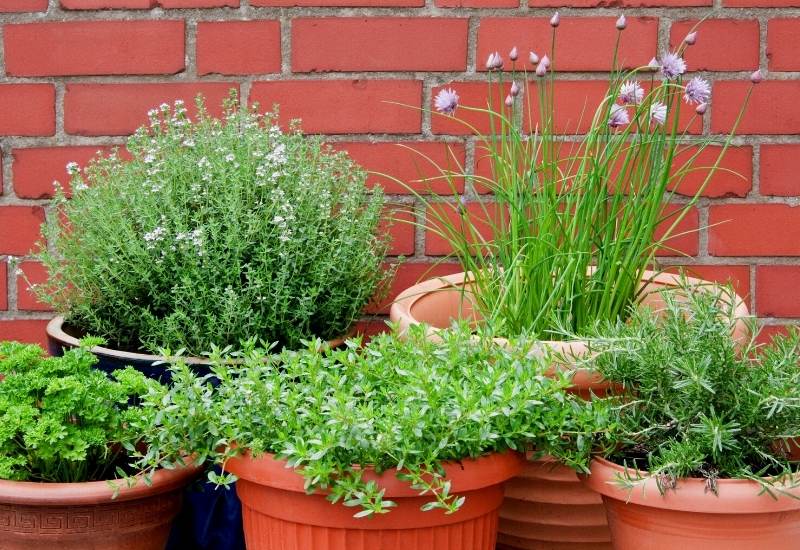
Container herbs are usually much more accessible than those grown in the ground, as they can be kept on a windowsill or just outside your kitchen door and provide you with easy access while cooking.
There are many herbs that are a bit fussy about soil conditions, especially if you are growing those that aren’t native to your area, so growing them in a container allows you to build the ideal soil from scratch.
Additionally, sprawling and aggressive spreaders – like lemon balm or anything in the mint family- are more easily managed in containers, where you can keep the size of lawless herbs in check and avoid them becoming invasive in your garden.
For city apartments or small homes, herbs may be the only thing you have space for, and containers give you the flexibility to move them around whenever they are in the way.
This article will outline tips on how to care for your container herb garden, and provide you with some inspiration with a list of the best herbs for containers.
Tips & Tricks for Growing Herbs in Containers
Each herb in the list further down will have its own specific care needs and should be grow accordingly, but here are some blanket rules that apply to all herbs being grown in containers:
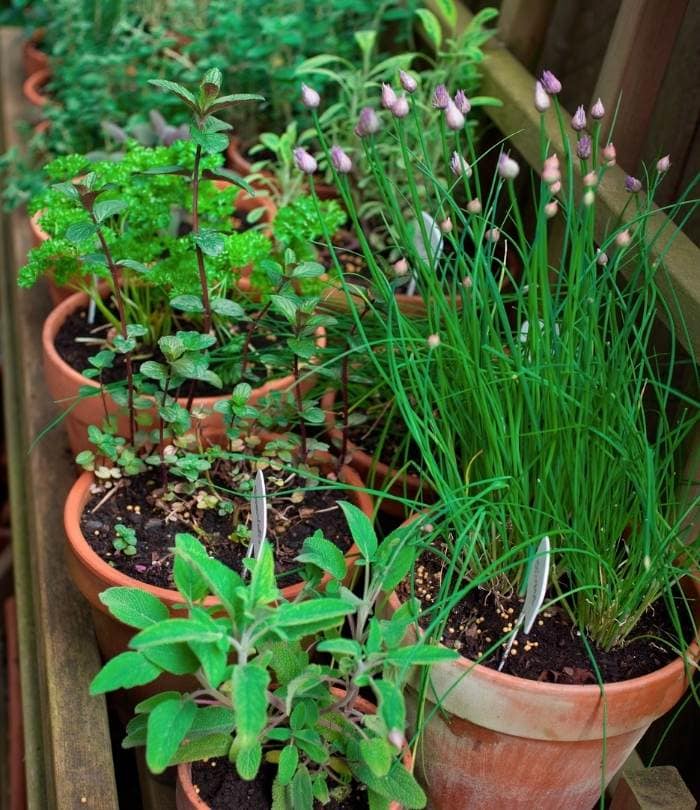
12 Of The Best Herbs To Grow In Pots And Containers
With so many types of herbs out there, you should first and foremost plan on growing the ones that you will use and cook with.
The list below contains 12 popular herbs that grow well in containers, most of them being perennials that will persist for many seasons and offer lengthy harvests.
1. Basil
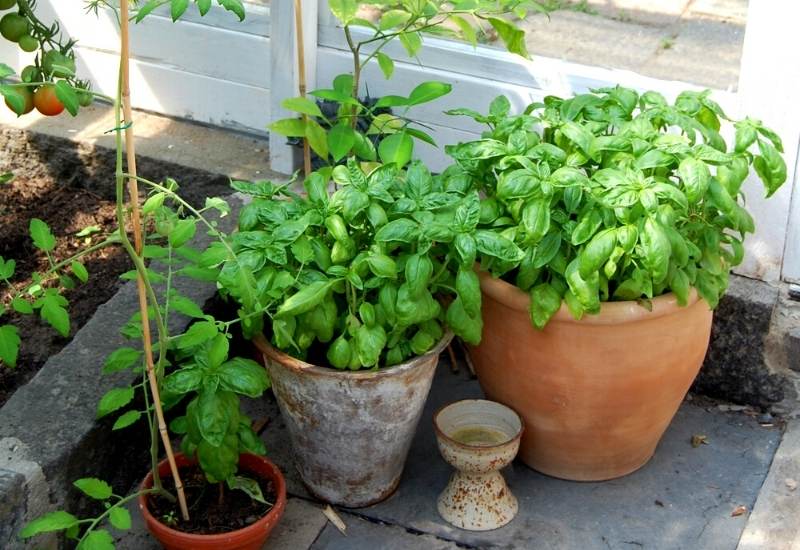
Flavourful and great in Italian cooking, basil is an annual herb well suited to growing in a pot because it responds well to being frequently trimmed back. Pinch off a cluster of leaves from the top node often to encourage fresh growth, and the leaves freeze well for winter use.
It needs good air flow between plants so if putting more than one basil plant in a container make sure to keep them around 10 inches apart from each other. Basil should be planted in pots that hold 5 gallons of soil and are at least 10-12 inches deep, as the plants can grow up to 2ft tall when mature.
2. Mint
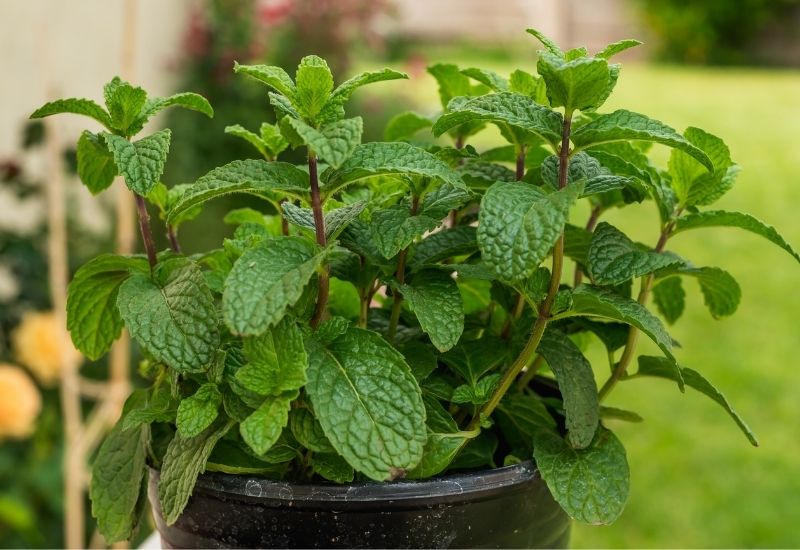
There are many varieties of mint that can be grown, and all of them are easiest to manage when kept confined to the limited space of a container. Mint spreads like wildfire in the garden and will begin to compete with other plants and crowd them out.
Keeping it confined to a pot will save you a lot of work in the long run, whilst still providing fragrant smells and attracting lots of pollinators.
Spearmint, peppermint, or chocolate mint are popular varieties, and can be mixed and matched in the same container. The bigger the pot the better, but ensure it is at least 8 inches wide and 10-12 inches deep.
3. Thyme
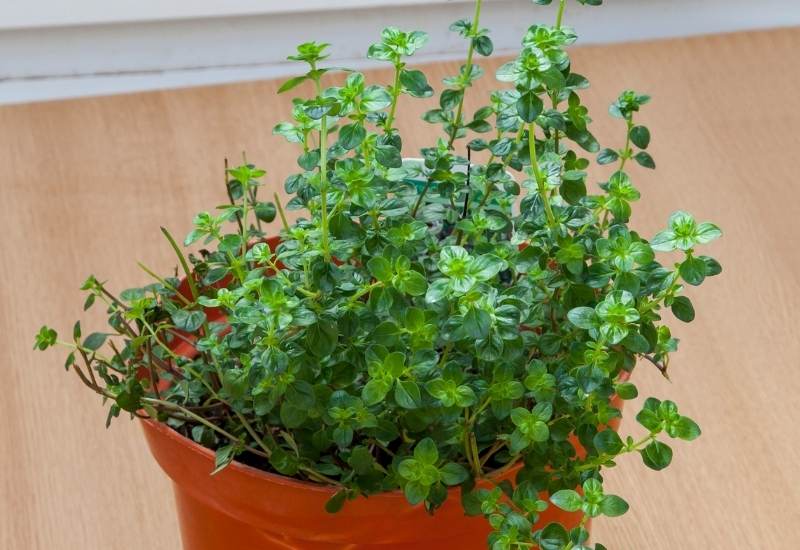
Thyme is a popular choice for container herb gardens because it only grows to about 10 inches tall and is quite hardy. A perennial that is well suited to extra small spaces, the smaller varieties of thyme only need a container 4 inches tall and 6 inches wide.
The plant can sprawl out and spill over the edge of the pot, so you may need to eventually repot it. The tiny leaves are fragrant and lemony, and are a popular addition to soups and roasts.
4. Rosemary
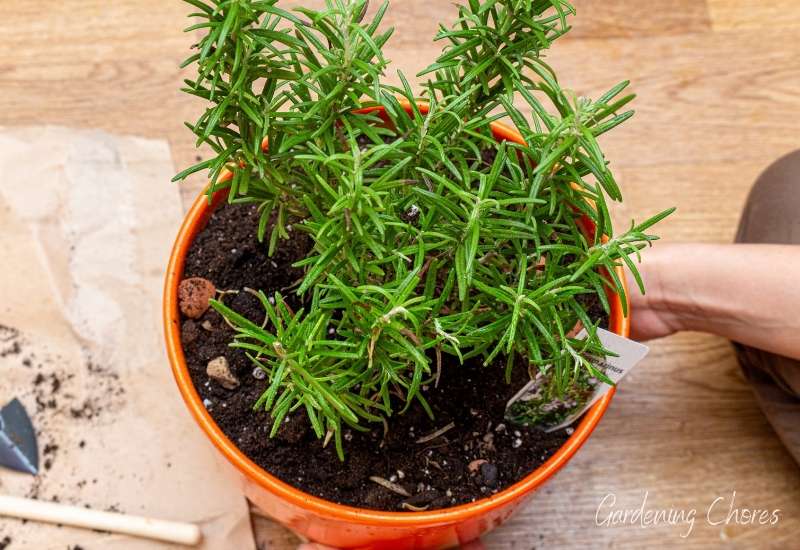
Rosemary is a woody perennial that is native to the Mediterranean. Rosemary should be grown in a container if you are in a climate that experiences cold winters, so that you can easily bring it indoors when the weather turns.
There are a number of varieties, most of which grow straight upwards but there are a few that cascade down and look particularly nice in pots.
The upright varieties can reach the size of a small bush at 3ft tall, but you should start them in a smaller pot that is around 6-8 inches deep and pot up as the plant grows.
5. Parsley
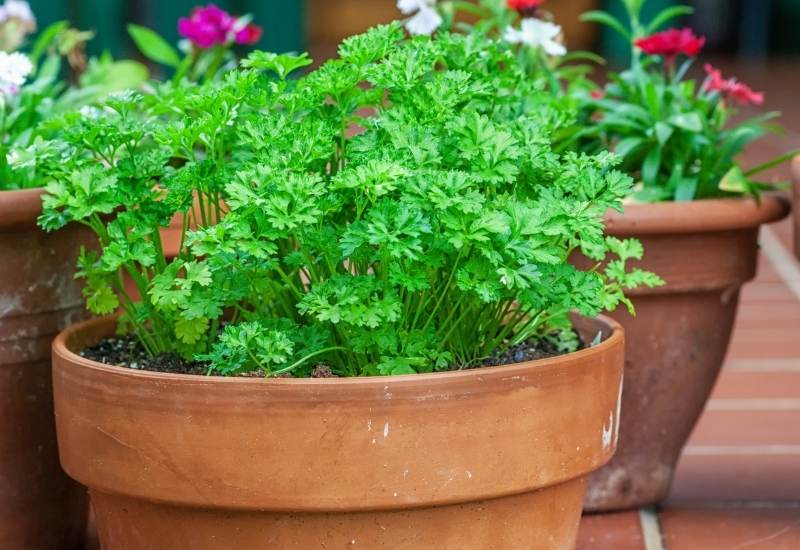
Parsley is a biennial herb well suited for containers as it can be propagated from just a stem cutting. It is sensitive to too high or too low temperatures, so keeping it in a pot is ideal so that you can change its location as needed.
The two main varieties are flat and curly leaf parsley, and they are both good companion plants for a number of ornamental flowers. If growing them as annuals you can choose a pot around 8 inches deep, but if growing as biennials go for one that is at least 10 inches deep.
6. Sage
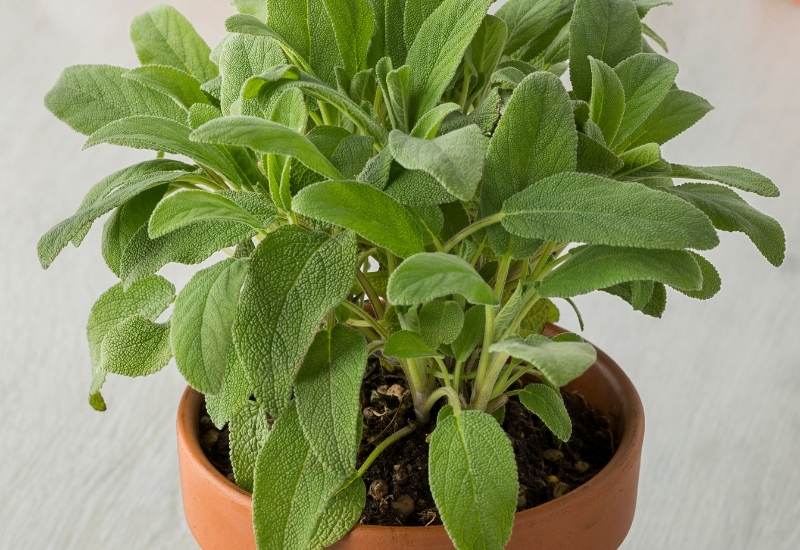
Sage is a fragrant perennial loved by pollinators and often used as a deterrent for insect pests. It likes soil that has good drainage, which makes it a good candidate for pots where you can micromanage the soil conditions.
There are many varieties but they usually have a purple tint to their silver-green leaves, and are known to be hardy and resilient once established. Select a pot that is around 10 inches wide and 8-10 inches deep, or plant in a larger pot with other herbs to keep away bothersome pests.
7. Oregano
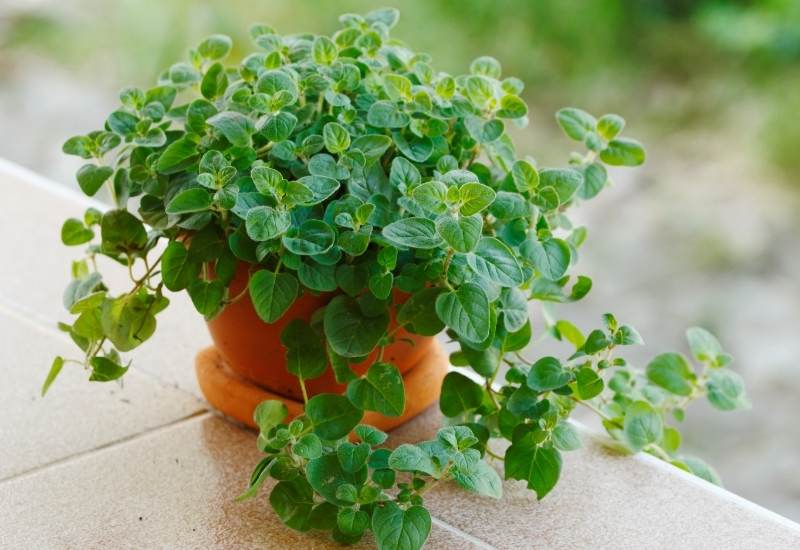
Another herb native to the mediteranean, oregano has a powerful flavor often used in Italian cooking. It grows well in a container where you can control its growth, as it can become quite bushy if left to its own devices in the ground.
In pots, oregano will typically max out at around 12-18 inches, and should be planted in a container at least 8-10 inches deep. There are lower-growing varieties like creeping oregano that work better in shallow and wide containers like window boxes.
8. Marjoram
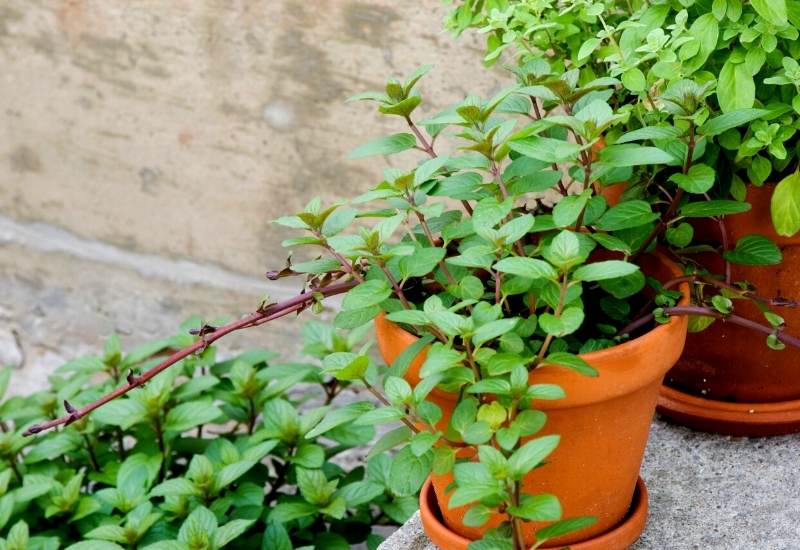
Marjoram is another perennial that is usually grown as an annual, and is closely related to oregano but has a milder flavor. It grows well in pots as it usually won’t get larger than 12 inches and is good for beginner container herb gardeners as it is fairly low maintenance.
The initial container should be at least 6 inches wide and deep, and you can pot it up as needed. Stem cuttings can be taken for propagation in the fall and new plants started indoors during the winter.
9. Chives
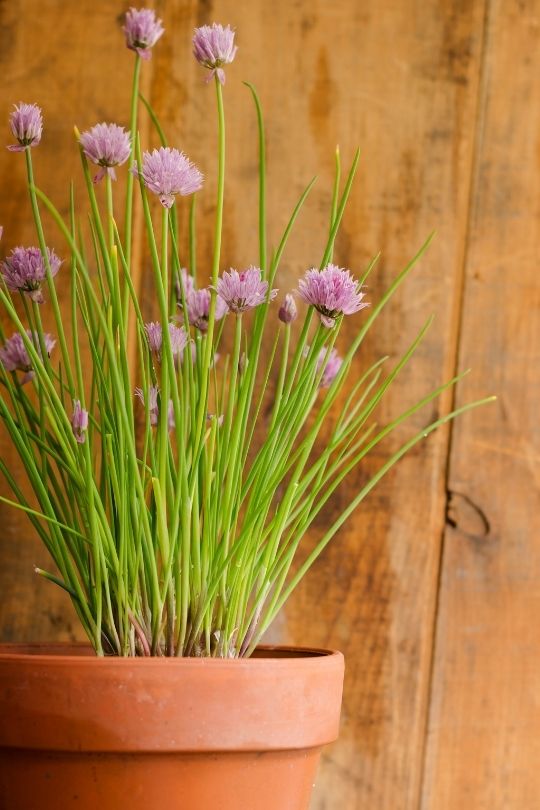
Chives are perennials that offer a great, onion-like flavor and have ornamental value when they go to seed with large spiky purple flowers. Chives are relatively simple to grow in pots and have a quick turnover of only a few weeks, which will make it one of the earliest producing herbs in your container garden.
They are not very fussy and a nice addition to a herb collection so you can focus your attention on those higher maintenance plants. Stagger plantings and grow many together at once for continuous, fresh herbs all season. Select a pot that is at least 8 inches deep, and you can sow many plants together in the same pot at around 6 inches apart.
10. Dill
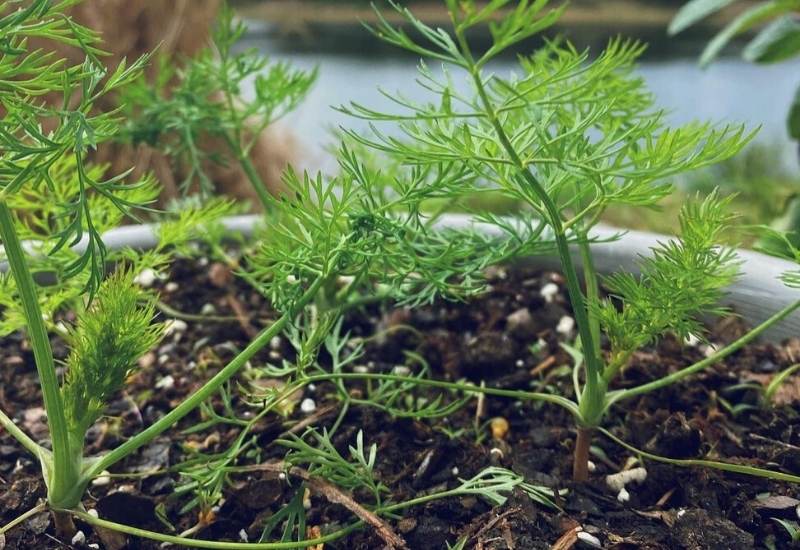
Dill is a biennial herb, typically only grown as an annual, with feathery leaves and a distinctly strong flavor often used in pickling. It is well suited for container growing because there are a few underground pests (caterpillars, tomato hornworms) that like to munch on it that will have a harder time getting to the plant when it’s potted.
Even better is if you plant it in a pot with thyme or other companions, as it is known to be a deterrent for the pests of other plants. Dill can reach 2 or even 4ft tall, and develops a long taproot, so plant in a 5 gallon pot at least 12 inches deep. You may need to stake it to prevent the plant from flopping, or select a dwarf variety.
11. Lemon Balm
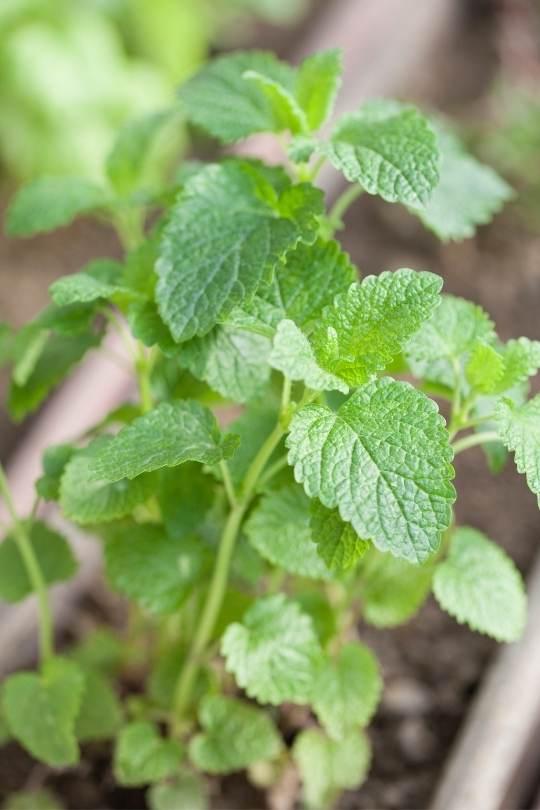
In the mint family, lemon balm has soft, heart shaped leaves that are fragrant addition to your herb garden and offer a mild lemony flavor to recipes. They are best kept in pots as they often become invasive when grown in the ground, and can take over your garden very quickly if not kept under a firm hand.
When kept to a pot lemon balm will become an attractive bush that will offer a continuous harvest throughout the season. Plant lemon balm in a pot that is at least 8 inches deep and the wider the better. Harvest sprigs when they are 8 inches tall.
12. Cilantro
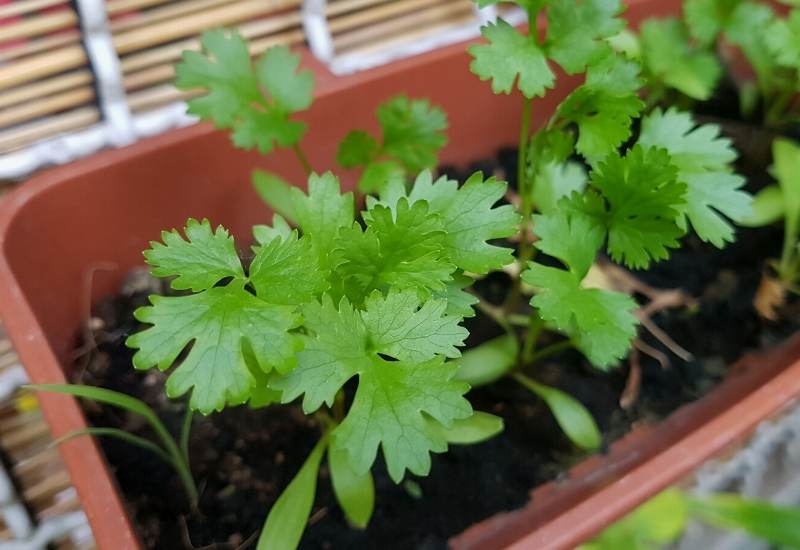
Cilantro is a hardy annual that benefits from the mobility of being grown in a container, as it is sensitive to temperature. Grown for both its leaves and seeds, cilantro seeds are called coriander and often crushed and used as a spice. If growing cilantro for its leaves, make sure to keep it out of high heat, which will cause it to bolt.
However if you are growing it for the purpose of saving coriander seeds, you will need it to bolt and should place it in a hot, sunny spot. When kept in a pot you can extend the leaf harvest by keeping it in partial shade and then once you decide you want to harvest the seeds move it to a sunnier spot. Best grown in a bowl container of 15 inches wide and 8- 10 inches deep.
How And When To Prune Your Herbs
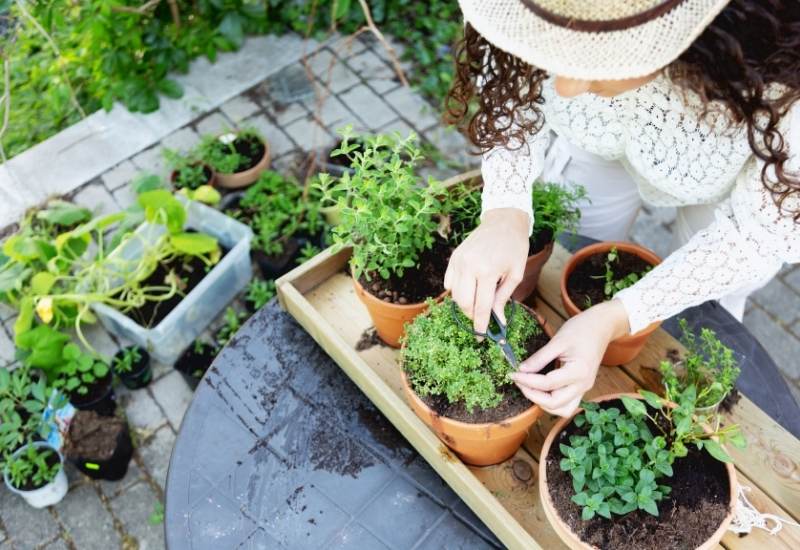
The only herbs that typically need to be pruned are woody perennials. Annuals and herbaceous herbs will grow to the space you provide them in your pot, and fresh growth is encouraged by frequent harvesting.
Woody herbs like some varieties of sage, rosemary, or thyme should be pruned before the woody stems become too tall and stop producing new growth.
Here’s how to trim herbs to keep them growing:
- The best time to prune your woody herbs is in spring, but if you missed that window then you can also prune them back after they flower in the summer.
- Make your cuts just above a lower node, removing around the top third of your branches.
- Freshly cut spots and sensitive new growth will be killed by frost, so if you have waited too long and the weather has already turned, it is better to wait until next spring to do your pruning.
- You can lightly trim the plants at other times in the growing season to achieve the shape you want, but make sure to do your major cuts at the times specified above.
- Even if your pots are indoors they should still be pruned to maximize healthy growth and keep your compact bush from becoming a collection of sticks.
Herb Garden Maintenance For Fall And Winter
You can extend the season of potted herbs by bringing them indoors and placing them in a sunny spot like a windowsill.
But eventually the life cycle of the herb will require you to follow these steps to winterize your container herb garden, which are different for annual and perennial herbs.
- For annuals, you can save the seeds and then throw the plant on your compost pile. It also may have self-seeded in the pot so you could always wait until spring and see what pops up again. Otherwise, disinfect the pot with soap and water and let dry completely before storage.
- For perennials, trim away brown leaves or dead stems on woody shrubs. If you are leaving them outdoors in pots for the winter, move them to a spot that doesn’t go below freezing and trim herbaceous plants down to a couple inches tall.
- If leaving any pots out in the winter, they should be plastic as most clay pots will crack in freeze/thaw cycles.
Continue Building your Potted Herb Garden!
Now that you know the basics, keep adding new herbs or different varieties of herbs to your collection. Many herbs grow well together in the same container, so consider grouping them together by cuisine for a one-pot stop when cooking.
For example, an Italian herb container could have oregano, basil, and sage growing together – creating a great flavor base for pasta sauces!
Just remember to choose pots and soil with good drainage and to place your herb garden in a sunny spot, and you’ll have a fragrant, buzzing container herb garden in no time!

Written By
Amber Noyes
Amber Noyes was born and raised in a suburban California town, San Mateo. She holds a master’s degree in horticulture from the University of California as well as a BS in Biology from the University of San Francisco. With experience working on an organic farm, water conservation research, farmers’ markets, and plant nursery, she understands what makes plants thrive and how we can better understand the connection between microclimate and plant health. When she’s not on the land, Amber loves informing people of new ideas/things related to gardening, especially organic gardening, houseplants, and growing plants in a small space.
